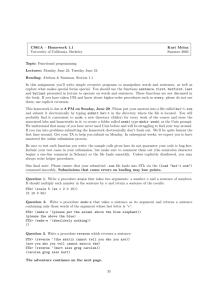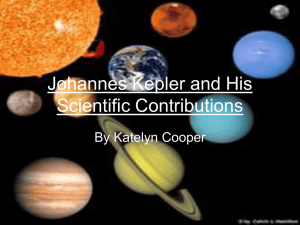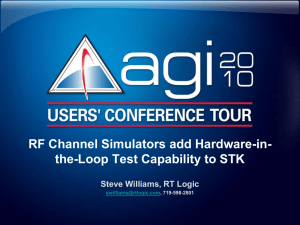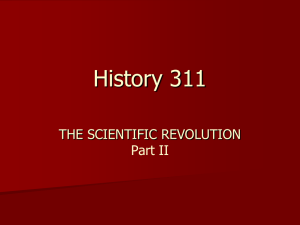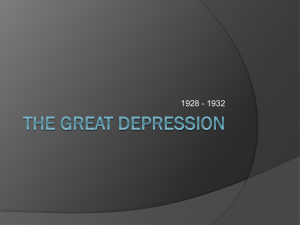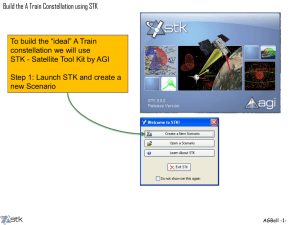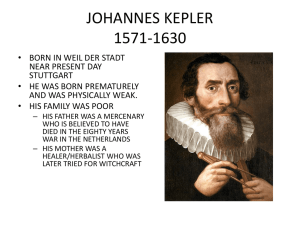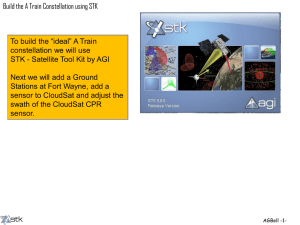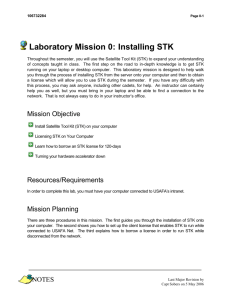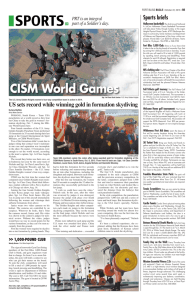Ball Aerospace colleagues
advertisement
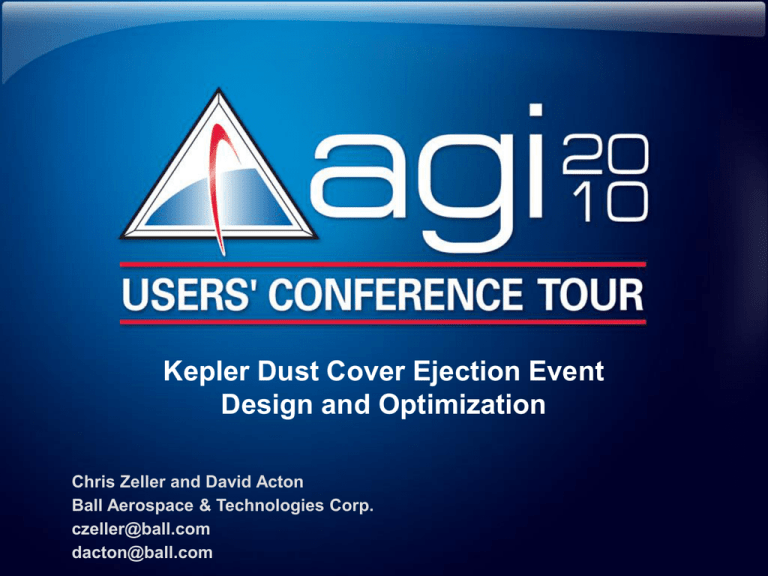
Kepler Dust Cover Ejection Event Design and Optimization Chris Zeller and David Acton Ball Aerospace & Technologies Corp. czeller@ball.com dacton@ball.com Outline Kepler mission overview Summary of problem How and why project used AGI software Optimizing dust cover release attitude Key risk reductions from using AGI software 2 Kepler mission overview NASA mission launched March 2009 Planet transit Search for Earth-size planets – In/near habitable zone of solar-like stars Highly sensitive photometer Continuously and simultaneously measures brightness of >100k stars Variation in star brightness indicates planet transit Flight segment design and fabrication at Ball Aerospace & Technologies Corp. Scientific Operations Center at NASA Ames Research Center Mission Operations Center at LASP – University of Colorado 3 Summary of problem Ensure ejected photometer dust cover (DC) does not return to strike flight segment (FS) Determine release attitude to maximize FS-to-DC distance over mission duration – Must meet power, telecom, and sun-avoidance constraints Ensure validity of solution considering uncertainties – DC ejection direction and velocity – DC surface properties – DC release date 4 Kepler trajectory description Helio-centric Earth-trailing orbit avoids obscurations Projection of photometer axis onto the ecliptic View from the ecliptic North Pole Autumnal Equinox Kepler’s orbit Fall roll period – ~0.5 AU range from Earth after 4 years No traditional V maneuvers required Earth’s orbit Winter roll period Winter Solstice Summer Solstice Sun Periodic reaction wheel desaturations – Via RCS thruster pulses – Small but measurable effects on trajectory – STK excellent modeling fit Summer roll period Orbital direction Kepler 4 years later Kepler 1 year later Earth on March 6th Spring roll period Launch Vernal Equinox Earth’s orbit Kepler’s orbit Kepler’s position on March 6th of each year Earth at launch Roll period 5 Dust cover design and release Dust cover Protects photometer – Contamination prior to, and during launch – Stray/direct sunlight during launch and early commissioning Photometer Deployment mechanism – Single latch, single fly-away hinge, and pre-loaded screws Spacecraft Dust cover > 14 kg 1.7 x 1.3 m Hinge Nominal release – Along vector ~ 8º from sunshade normal, towards hinge side – Relative velocity ~0.5 m/sec – Variations must be considered Pre-load fittings (x4) Latch Photometer field-of-view (~100 deg2) t = 2.9 sec t = 3.3 sec t = 3.9 sec t = 4.2 sec Constraints on release attitude – Power – Telecom – Photometer Sun-Avoidance Sunshade normal Sunline Cover position at t = 2.4 sec after release Sunshade assembly 6 STK allowed efficient and accurate analysis for important Kepler issues STK as standard trajectory modeling and analysis tool – Chosen early in the project – Ease of use, flexibility, visualization, accuracy, and familiarity to analysts Used for a variety of analyses – – – – – – Power estimates, telecom range and angles for duration of mission Initial Acquisition timing and angles Deep Space Network station view periods Optimization of quarterly roll windows Verification of commissioning attitudes Dust Cover Ejection event (this presentation) Allowed validation of similar customer analyses This analysis – STK Professional, Astrogator, Chains, and Analyzer – Astrogator provided unique features to tailor deep space analysis 7 Baseline trajectory model Trajectory modeled using Astrogator – – – – – Initial conditions at launch vehicle separation Near-Earth perturbations with Earth-moon gravity model Dust cover separation reaction modeled as a maneuver Desaturation burns (every 3 days) using sequence loops Deep Space propagation (6 years) Kepler-Earth body-body rotating reference frame 8 Validation of the STK Kepler model Validated model with JPL Navigation Team’s MONTE Tool – Tailored Astrogator propagator to determine which physics to model – Updated STK to latest planetary ephemeris to match JPL inputs Final result – highly accurate STK trajectory model Range Difference Between JPL and STK Solutions 30000 Selected Propagator: • Earth J2 with Moon + Sun 3rd bodies • Heliocentric + all 9 planets after 9.25E+5 km from Earth 25000 Relativity On Standard HPOP, Helio HPOP No Moon Standard STK HPOP HPOP CIS Lunar Helio No Rel CIS Lunar Helio No HPOP Cis Lunar Helio Rel J2 Helio HPOP Lite Helio J2 Moon Sun Helio JDM3 HPOP Helio J2 8x8 JDM3 J2 2x0 JDM3 20000 Range (km) 15000 Alternate Selection: • Earth HPOP + Sun/moon 3rd bodies • Heliocentric + all 9 planets after 9.25E+5 km from Earth 10000 5000 0 0 500 1000 1500 2000 2500 3000 Days After Release Validation was essential to provide customer confidence in solution 9 Features of the dust cover ejection model Coordinate system selected for fixed attitude with respect to Sun – Provided fixed constraints for photometer sun-avoidance & power – STK Vector Geometry Tool validated antenna, star tracker, photometer FOV constraints Target pointing attitude selection used to determine release attitude VNC(Sun) = Velocity, Normal, Co-Normal, centered on Sun Baseline DC trajectory returned towards FS several times – Oscillatory behavior – Suggested we perform optimization and sensitivity analyses 10 Analyzer Carpet Plot was generated to optimize release directions Appropriate Figure-of-Merit was crucial – Oscillatory behavior of DC motion required careful FoM choice – FoM chosen as minimum range after initial “drift-away” period Note: Not all options were good ones 11 Optimum release direction Optimal release direction maximized minimum range – But did not meet Earth and Sun constraints – Selected next best option – Nominal minimum range after drift away is 40,820 km Kepler Dust Cover - FS Relative Range 600,000 500,000 Actual 0 Az,35 El Optimum 0 Az, 0 El 400,000 Range (km) 300,000 200,000 100,000 Desaturation impulses help – Tend to push FS away from DC over time 0 Mar-2009 Mar-2010 Mar-2011 Mar-2012 Mar-2013 Mar-2014 Mar-2015 Date Attitude computation – Target Pointing attitude and custom reports used to compute VNC-Body quaternion 12 Sensitivity analysis using Analyzer Distribution of Dust Cover Minimum Range for Variation in Release Direction, Magnitude and SRP – Release angle, release velocity, and DC reflectivity 30 Monte Carlo tool to investigate variations in parameters Verified large minimum range met under even 3 conditions Reduced risk that inaccuracy in any one parameter could throw us “off the cliff” -3 34,327 Km Mean 40,814 Km +3 47,302 Km 25 Frequency 20 15 10 5 0 34,090 35,511 36,932 38,354 39,775 41,196 42,618 44,039 45,461 46,882 Min Range (km) 13 Sensitivity analysis for DC release date Reduce impact of commissioning schedule changes Necessary to run manually – Analyzer could not handle variations in epoch dates Determined release date variations acceptable – Within range of dates considered DC-FS Range With Varying Release Date Vs. March 28th 2009 10,000 29-Mar-09 30-Mar-09 5,000 Range Difference (km) 31-Mar-09 1-Apr-09 0 2-Apr-09 3-Apr-09 -5,000 4-Apr-09 5-Apr-09 6-Apr-09 -10,000 Dust cover successfully released on April 8, 2009 7-Apr-09 Worst Case DC-FS range > 40,000 km -15,000 8-Apr-09 9-Apr-09 10-Apr-09 -20,000 0 500 1000 1500 2000 Days After Release 14 STK provided key risk reduction for dust cover ejection STK allowed efficient analyses of complex problem – Reduced cost and time to address important Mission Design concern Ability to fine-tune trajectory estimates during independent validation with customer solutions lowered risk of errors Cost-benefit of Analyzer was important – Significantly reduced time for optimization and Monte Carlo analyses 3D visualization provided simple visual verification of all results – Lowered risk of violating flight rules – Easy to communicate results across program and to stakeholders 15 Acknowledgements AGI Tech Support – For their helpful dedication and long hours helping sort out the best way to approach the problem Jeff Baxter Dana Oberg Luis Montano Ball Aerospace colleagues – For their insightful consultation Scott Mitchell Adam Harvey 16 Contact information Chris Zeller – Senior Systems Engineer – Ball Aerospace & Technologies Corp. – Boulder, Colorado – czeller@ball.com – 303-939-4636 David Acton – Senior Systems Engineer – Ball Aerospace & Technologies Corp. – Boulder, Colorado – dacton@ball.com – 303-939-4775 17
